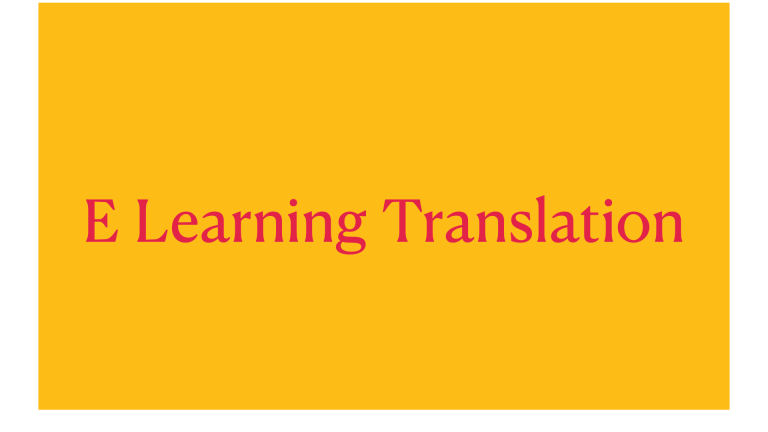During the pandemic, we saw a shift in online education. A study revealed that around 92.7% of children had online learning experiences during the pandemic. Before understanding e-Learning Localization, it is essential to understand the process of localization.
You must have heard this definition many times before: localization is a process that goes beyond mere translation. And it is true on so many levels. One of the essential features of the localization process is that it addresses various aspects of how the content gets presented. Like the colors used, units of measurement, and cultural nuances that align with the target audience. And now, back to our topic: e-Learning localization.
In a simple definition, e-Learning localization means using electronic means to have a program, course, or educational degree. It could be done without attending a conventional classroom.
Want to know more about e-learning localization? Read this blog further as we delve into the world of e-learning, knowing its importance and learning about the best e-learning localization services.

What is e-Learning localization?
Before learning about e-Learning localization, it is essential for you to understand what is meant by e-Learning. E-learning is a short form of electronic learning and is known to deliver training content and educational resources via digital resources. It is the concept of giving online training and education to students, employees of companies, and internet users. It is also known as Distance/Remote learning.
Elliot Maisie coined the term e-learning in 1999 at his TechLearn Conference at Disney World. E-learning is a cost-effective and time-efficient way to educate and train your employees. Now if we have to define e-learning localization, we can say that it adapts and translates training content for a target audience that speaks different languages and follows different cultures. It goes beyond just swapping images.
It allows the training content to be relevant for everyone from all around the globe. This localization is not limited to just translating the training and learning content but also customizing symbols, images, fonts, idioms, pictures, units of measurement, and many more.
We often use e-learning localization and translation interchangeably, but they mean two different things. The sole purpose of e-Learning localization is to deliver the meaning of the learning content exactly as the source material but also consider the cultural context. It could increase the educational impact.
Importance of E-Learning Localization
The localization process involves cultural disparities that might offend people. For instance, an American leader’s picture of a thumbs-up could be a sign of encouragement. But the same thumbs-up sign in the Middle East is considered a rude gesture. So, the best way to avoid such mishaps in the localization process is to learn the target audience’s etiquette, communication styles, and values that could be added to your e-Learning localization process.
As we know, cultural phenomena and language play a significant role in a person’s ability to learn. People learn more quickly in their native language than in translated content. As we know, English is the dominant language of the global economy. Most of the companies have headquarters in the US, but their manufacturing, research, warehouses, and other facilities are all around the world. So, for this reason, companies need to train and educate their employees. And e-Learning is the best way to do that.
The learning content is in their native language, and they get a high-quality localized version of the content. This localization has proven to have the best comprehension and engagement. Global companies are investing in this localization strategy to ensure that their strategies, policies, and everything else are explained in the employee’s native language.
Who provides the best learning localization services?
Educational and learning content have made it easier for students all over the world to navigate through their academics. This e-learning content allows you to learn anywhere at any given time. But you may not always find learning content in your native language.
This is where e-learning translation services come into the picture. E-learning services not only help students but also professionals and businesses that are trying to navigate their way in the global market. Online training and learning are fun as compared to traditional methods of learning.
We at Naarg are a specialized e-learning translation and localization company that provides services for your e-learning content. Our dedicated team of professionals ensures that language barriers are eliminated, enabling effective education for all. Naarg prioritizes user friendliness and strives to deliver the best possible results to end users. With a decade of experience serving the corporate world, we have completed numerous projects and are eager to take on new ones.
Naarg has established itself as a leading provider of e-learning translation services, catering to startups as well as large tech companies. We employ manual translation techniques to maximize the efficiency and reach of the content. Our translators retain the essence of the original content, ensuring no loss of meaning.
Naarg is a trusted partner for e-learning translation and localization services, offering a range of specialized translation services and expertise to ensure a seamless educational experience for learners worldwide.
Contact us today to learn more about our services.


